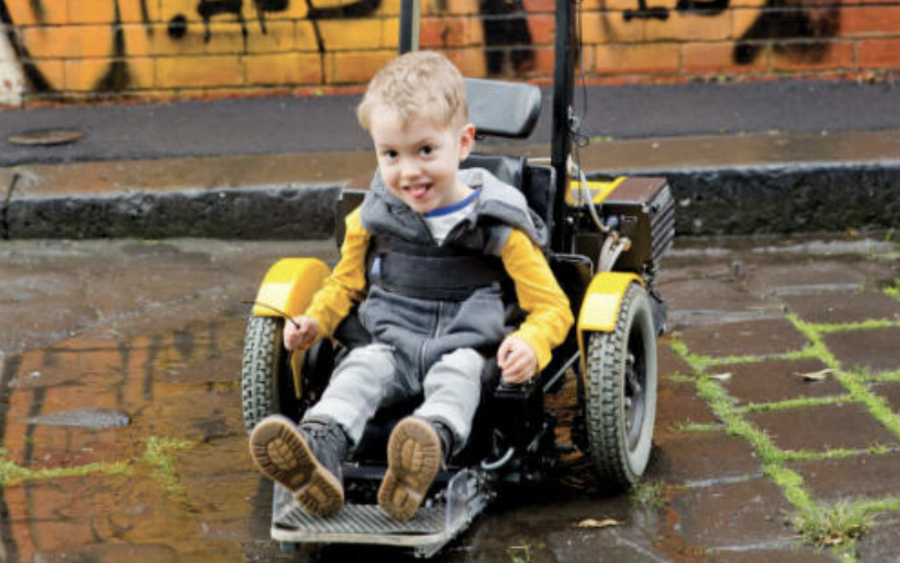
Quick tips on choosing the right wheelchair for your child
By Dace Johnson, Physiotherapist
Choosing the correct wheelchair for your child can be confusing, so it is helpful to get the assistance of a physiotherapist who has the skill and experience in the process. Successful use of a wheelchair by your child depends upon correct fit of the child to the wheelchair, the features of the wheelchair and whether it will be used for home, school and other settings.
Funding options are also important to discuss, as wheelchairs can be costly items. The process is divided into two broad areas – information gathering and assessment; and problem solving and prescription. The process usually involves the following steps:
- Interview with the family and child
- Observation and physical assessment of the child
- Goal setting with the family
- Measurement of child
- Wheelchair trial
- Prescription discussion
- Familiarisation with wheelchair
- Review
Information gathering
Initially the physiotherapist will discuss with you what the goal is for the wheelchair. Is it the child’s first wheelchair or a replacement for an existing one that is outgrown or no longer suitable?
If it’s a replacement wheelchair, what did or didn’t work for the child and family with the previous wheelchair?
If it is to enable the child to move independently by propelling the wheelchair by themselves, it is critical the wheelchair and seating be designed to allow proper biomechanics for efficient propulsion.
Consideration is given to comfort, mobility, positioning, durability of appliance, function required, functional movement available, client weight, environmental factors, transfers, transport of wheelchair, method of propulsion, and growth.
Further aspects of seating assessment and prescription would depend upon specific assessment of the child. Once the family and child’s needs have been identified, the therapist matches all these factors to the specific features available in a wheelchair.
The physiotherapist will then organise to meet with wheelchair suppliers so you and your child can trial different wheelchairs to work out the best fit. This can sometimes take time to get the best outcome for you and your child.
Problem solving and prescription
Wheelchair features to consider:
- Style of frame: how the wheelchair folds and if wheels come off? This can assist with transport.
- Footrest style: should support the child’s feet e.g. swing away to allow for standing transfers if required. If footplates are too far forward (greater than 90 degrees), this will place a stretch on tight hamstring muscles, the pelvis will tip into a slumped sit position and the child will have a curved spine and this will affect head position. Footrest style also affects manoeuvrability of wheelchairs in small spaces.
- Arm rest style: removable arm rests allow for easier access to wheels, ease of transfers, increase manoeuvrability e.g. under school desks and other surfaces.
- Size: wide wheelchairs are difficult to propel and important to consider in the selection process.
- Seat depth: this needs to suit the child as a seat depth too short will be unsupportive and if too long, the child can’t position pelvis well and therefore this may reduce arm and hand function and cause the child to slump and have a curved spine. This can contribute to increased risk of falling out of the chair.
- Backrest height: low height will be more functional for a child with good upper limb function; a child with lower upper limb function will require a higher backrest height.
- Height and adjustability of push handles: this is important to assist caregivers to push the wheelchair and ensure good posture.
- Floor to seat height: this is important for transfers and seating under tables.
- Brakes: need to consider ease of access for user and effectiveness.
- Wheelchair wheels and castors size, type and position: Note if position of child’s centre of gravity is directly over rear wheel axle – this promotes more efficient propulsion and access to wheels.
- Seat cushions: this is important to minimise risk of developing pressure areas. Several factors contribute to the development of pressure areas including skin temperature, moisture, shear and compressive forces.
- Pelvic restraint/belt: Wheelchair tips and falls often are due to poor adjustment/fit of the wheelchair and/or poor use of wheelchair skills. Pelvic restraints or seat belts when properly adjusted can help prevent injuries due to tips and falls.
Physiotherapists are great at working with you to help navigate the often baffling journey of funding and equipment options! Information regarding funding options is important to many families. Your physio needs to be familiar with current available options or be able find out more information on your behalf.
Dace Johnson Physiotherapist, Movement Solutions Physiotherapy Practice. For more information contact [email protected] [email protected]
Movement Solutions Physiotherapy practice aims to maximise your child’s physical potential.







